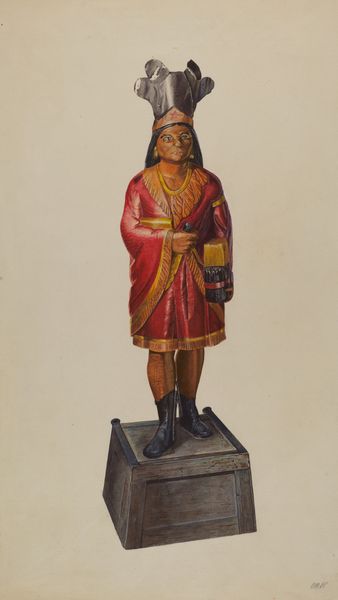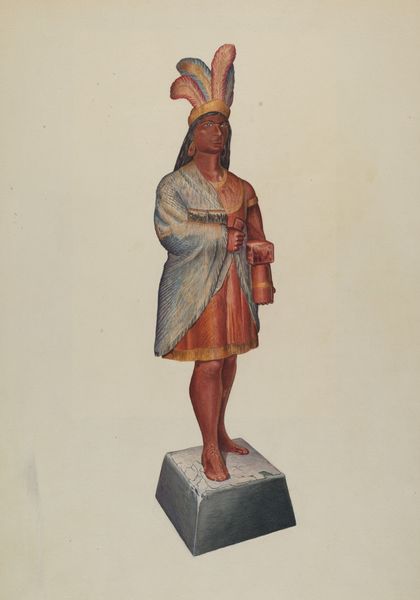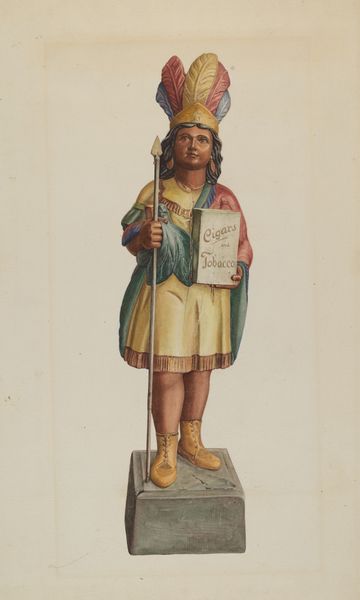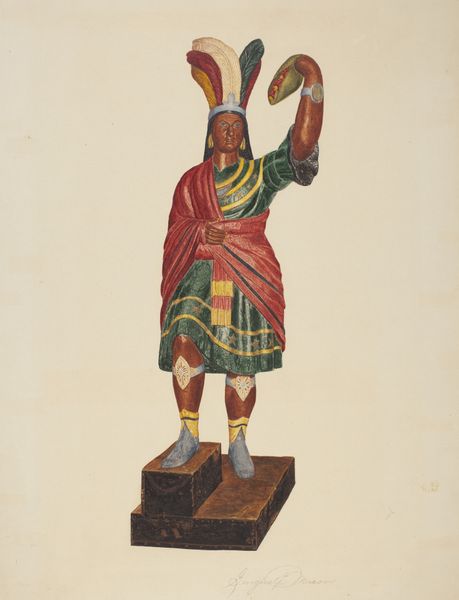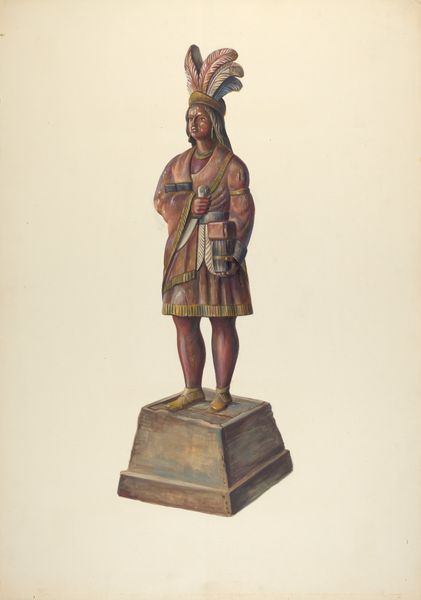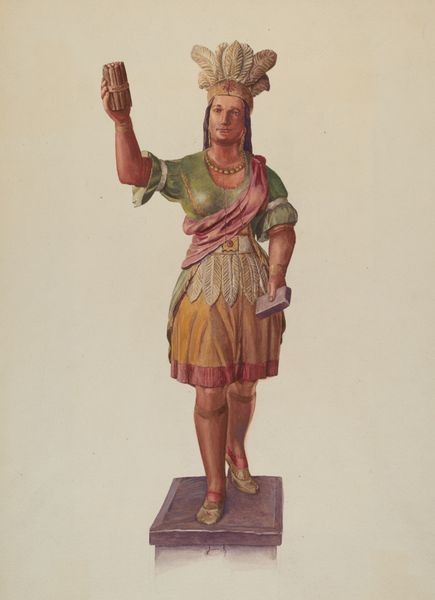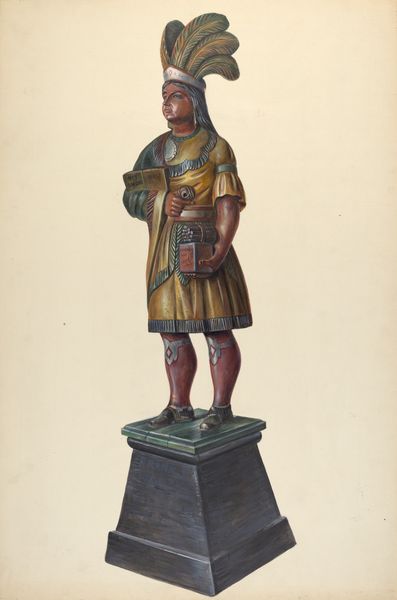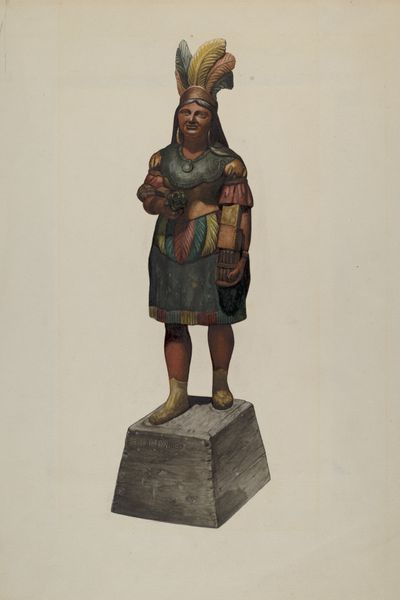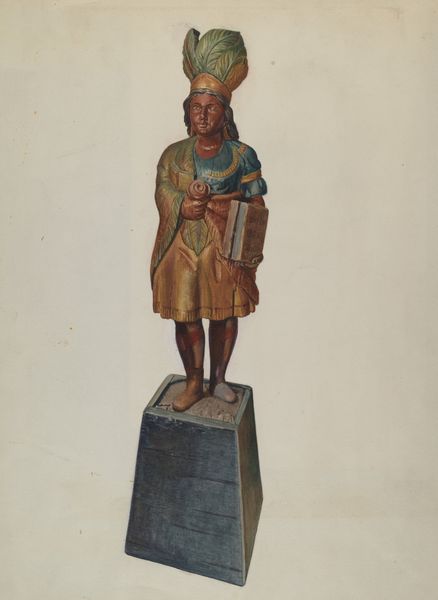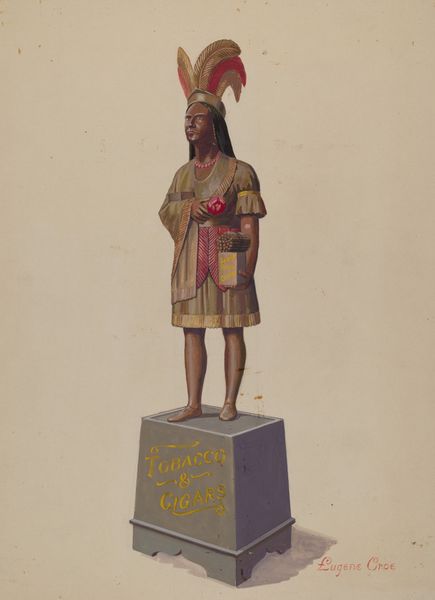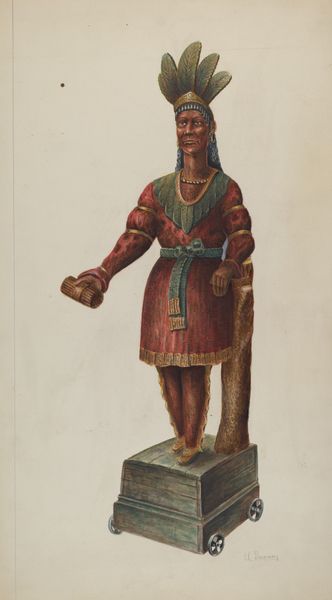
watercolor
#
caricature
#
watercolor
#
watercolour illustration
#
portrait art
#
indigenous-americas
Dimensions: overall: 34.7 x 23.9 cm (13 11/16 x 9 7/16 in.)
Copyright: National Gallery of Art: CC0 1.0
Curator: Welcome! We're here today to discuss Gordena Jackson's "Cigar Store Indian," dating from around 1937, rendered in watercolor. Editor: My first thought is… interesting pose. It's very static but there is a clear implied motion, like the figure is frozen mid-gesture. And the colour palette—very muted, almost like aged wood, adding to that sense of stillness. Curator: Indeed. It’s a depiction of what were once ubiquitous figures outside tobacconists across America. We often forget the cultural significance, and now, the problematic nature, of these objects. They served as commercial symbols but perpetuated stereotypical images of Indigenous people. Editor: Precisely. Consider the gaze. It isn't engaging. This imagery was not meant to reflect Indigenous agency or complexity but instead served the desires and biases of the dominant culture. The red sash almost seems…theatrical. Curator: The production of these figures coincided with a romanticizing of the ‘vanishing race’ narrative, conveniently sidestepping ongoing injustices and land dispossession. Their placement outside shops essentially commodified and commercialized Indigenous identity. Editor: And let’s think about context. This watercolor wasn't produced in a vacuum. Jackson painted this in a very specific period—The Great Depression—an era when the gaze upon racialized minorities became harsher and filled with increasing systemic barriers. Curator: It also calls into question the artist’s perspective, of course. Was Jackson intending critique, documentation, or simply replicating an accepted symbol of the time? The lack of readily available information about Jackson's intent leaves space for interpretation and, frankly, makes it a challenge. Editor: It also reveals the difficulty museums face in exhibiting these objects now. The history needs thorough context—acknowledging the exploitative nature and combating harmful representations. We need that dialogue. Curator: Exactly, otherwise they become unintentionally complicit in that cycle of misrepresentation. So it forces us to ask ourselves—as a society—what do we do with images or objects that come freighted with pain and cultural theft. Editor: It highlights art's ability to provoke those crucial, complex discussions. This "Cigar Store Indian" encapsulates more than just artistry; it captures power dynamics and difficult legacies. Curator: Right, seeing how historical and cultural forces have shaped our perception and continue to inform public dialogues is vital. Editor: I agree. And considering art in its political and social context— that’s what brings new light to a difficult artwork like this one.
Comments
No comments
Be the first to comment and join the conversation on the ultimate creative platform.
